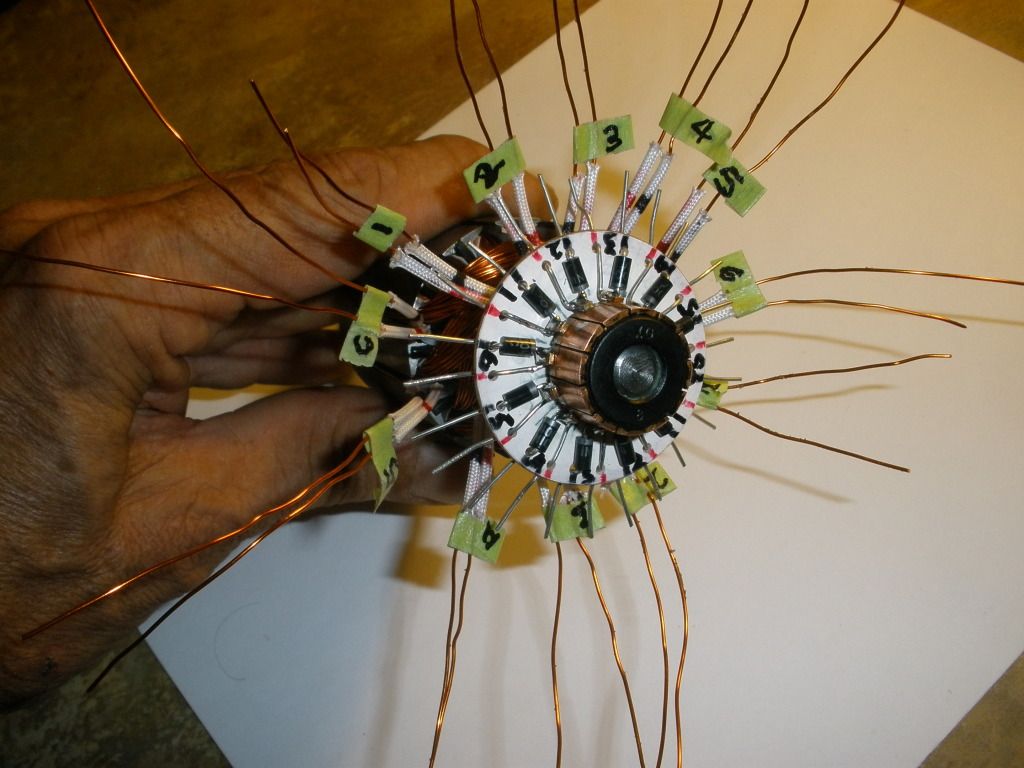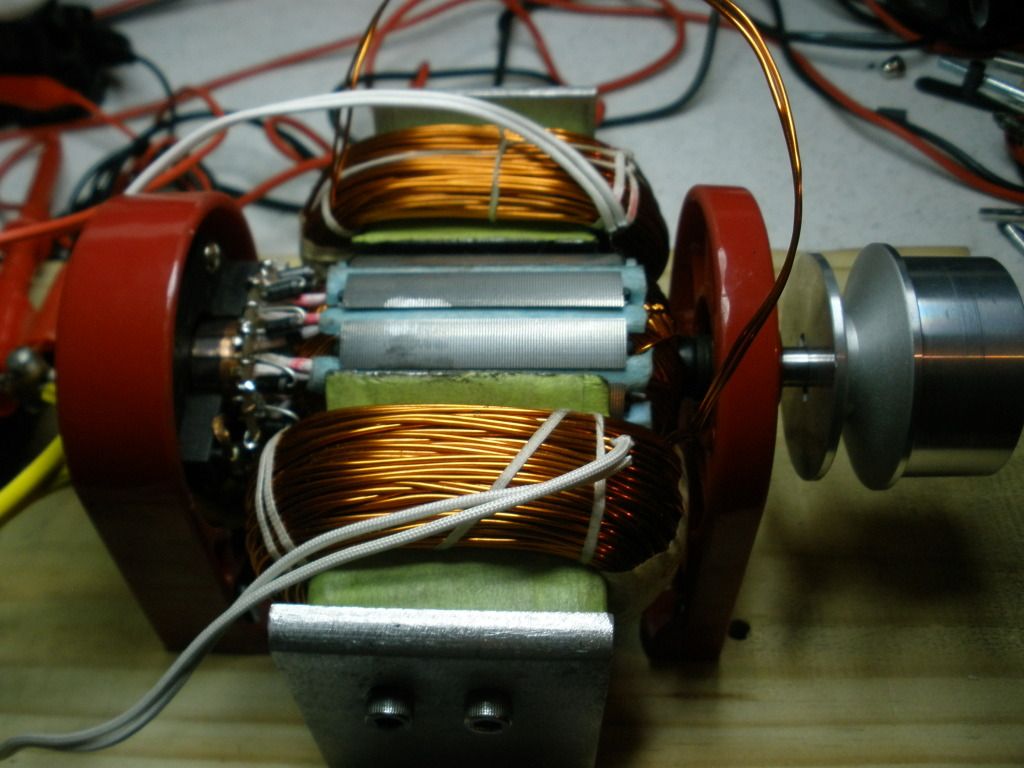My thoughts on Motors and Testing
The purpose of an electric motor is to convert electrical energy into mechanical energy as efficiently as possible. The measure of that output is torque.
As a novice builder some months ago, I was under the impression that revs equals torque. However. High revs does not necessarily equate to high torque.
There is a belief that calculating RPM/W is a good guide to the motors performance against a benchmark, usually the unmodified OEM baseline.
Over the past few days I have been Prony testing all the motors on my kitchen table. A few are presented here using my theory on percentage comparison :
No load figures for Watts and RPM on a 10v PSU (using ~ as a separator) -
OEM ~ 3.29W ~ 1492rpm
SC7 ~ 5.35W ~ 2823rpm
SC10 ~ 4.84W ~ 3160rpm
Taking the OEM as 100% -
OEM ~ 100% ~ 100%
SC7 ~ 163% ~ 189%
SC10 ~ 147% ~ 212%
%RPM/%W (result should be 1 'one' or higher to out perform the OEM) -
OEM ~ 1
SC7 ~ 1.16
SC10 ~ 1.44
Both motors out perform the OEM on the assumption that 'no load' RPM/W is a comparison.
Prony results - Torque output and Watts input -
OEM ~ 25.2Ncm ~ 40.26W
SC6 ~ 31.5Ncm ~ 102.52W
SC7 ~ 23.9Ncm ~ 69.84W
SC10 ~ 27.6Ncm ~ 84.2W
Taking the OEM as 100% -
OEM ~ 100% ~ 100%
SC6 ~ 125% ~ 255%
SC7 ~ 95% ~ 174%
SC10 ~ 110% ~ 209%
%Torque/%W (again, result should be 1 'one' or higher to out perform the OEM) -
OEM ~ 1
SC6 ~ 0.49
SC7 ~ 0.55
SC10 ~ 0.53
Two of the motors produce higher torque but all at the expense of higher watts. Accordingly, none of the motors have a high Torque/W ratio.
It's my assertion that the best method of comparison is Torque/Watt ratio. Not RPM/Watt ratio which can mislead.
Happy Hunting
mark
The purpose of an electric motor is to convert electrical energy into mechanical energy as efficiently as possible. The measure of that output is torque.
As a novice builder some months ago, I was under the impression that revs equals torque. However. High revs does not necessarily equate to high torque.
There is a belief that calculating RPM/W is a good guide to the motors performance against a benchmark, usually the unmodified OEM baseline.
Over the past few days I have been Prony testing all the motors on my kitchen table. A few are presented here using my theory on percentage comparison :
No load figures for Watts and RPM on a 10v PSU (using ~ as a separator) -
OEM ~ 3.29W ~ 1492rpm
SC7 ~ 5.35W ~ 2823rpm
SC10 ~ 4.84W ~ 3160rpm
Taking the OEM as 100% -
OEM ~ 100% ~ 100%
SC7 ~ 163% ~ 189%
SC10 ~ 147% ~ 212%
%RPM/%W (result should be 1 'one' or higher to out perform the OEM) -
OEM ~ 1
SC7 ~ 1.16
SC10 ~ 1.44
Both motors out perform the OEM on the assumption that 'no load' RPM/W is a comparison.
Prony results - Torque output and Watts input -
OEM ~ 25.2Ncm ~ 40.26W
SC6 ~ 31.5Ncm ~ 102.52W
SC7 ~ 23.9Ncm ~ 69.84W
SC10 ~ 27.6Ncm ~ 84.2W
Taking the OEM as 100% -
OEM ~ 100% ~ 100%
SC6 ~ 125% ~ 255%
SC7 ~ 95% ~ 174%
SC10 ~ 110% ~ 209%
%Torque/%W (again, result should be 1 'one' or higher to out perform the OEM) -
OEM ~ 1
SC6 ~ 0.49
SC7 ~ 0.55
SC10 ~ 0.53
Two of the motors produce higher torque but all at the expense of higher watts. Accordingly, none of the motors have a high Torque/W ratio.
It's my assertion that the best method of comparison is Torque/Watt ratio. Not RPM/Watt ratio which can mislead.
Happy Hunting
mark









Comment